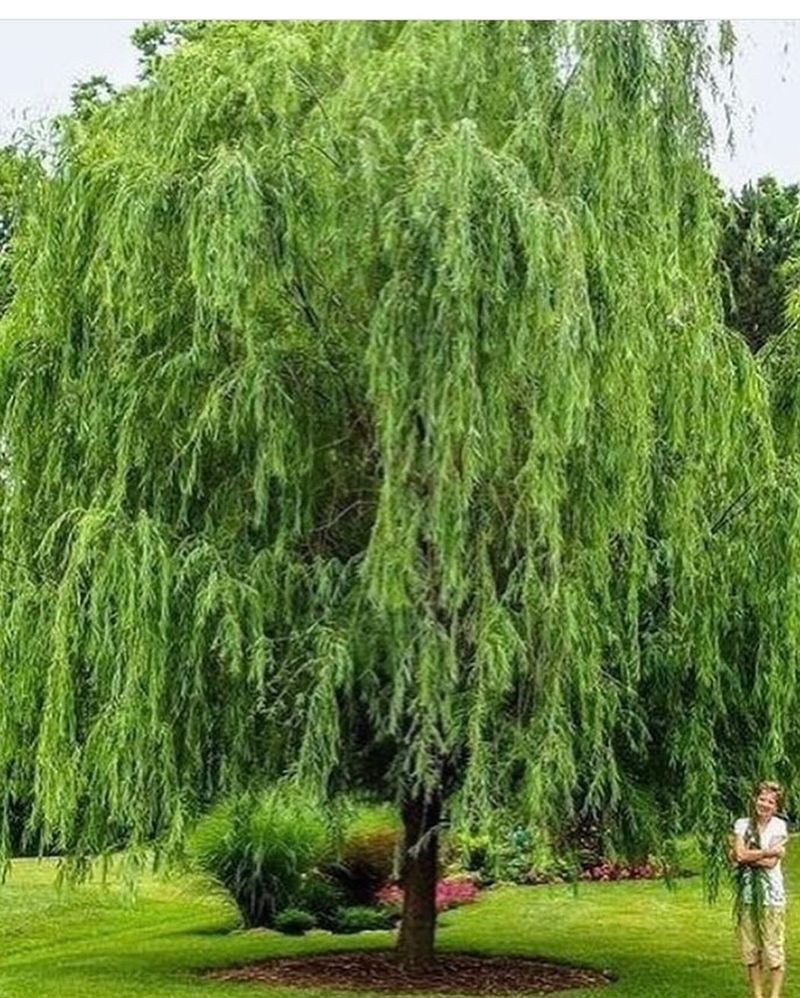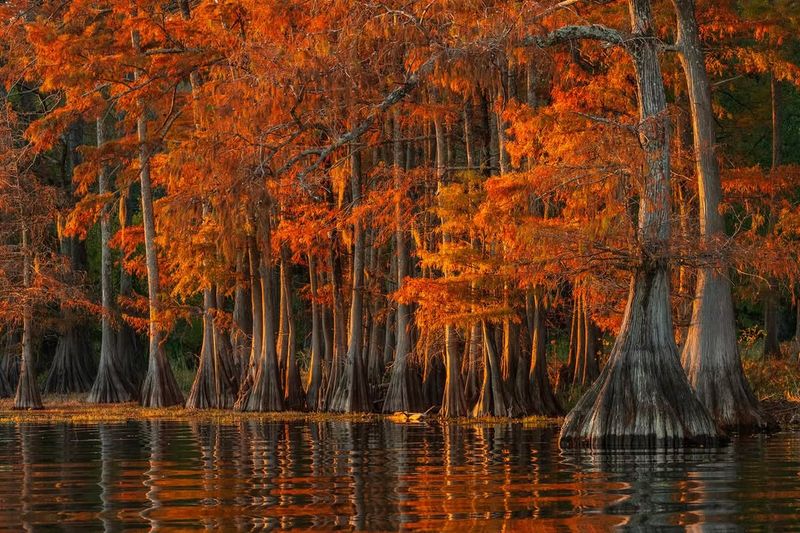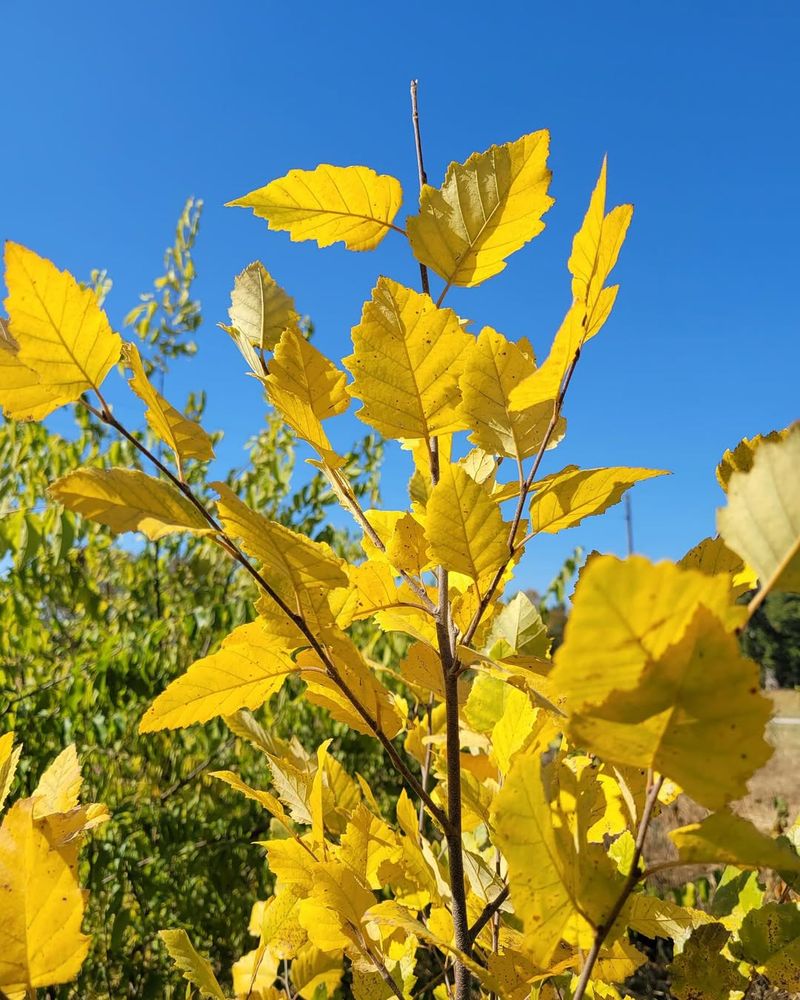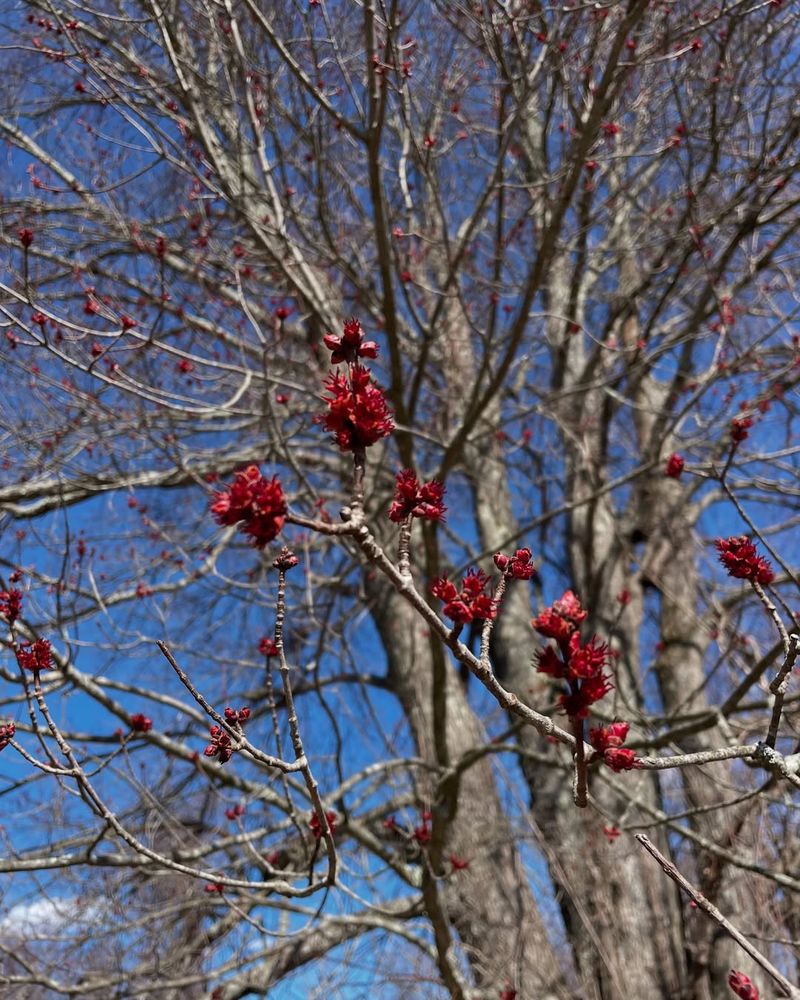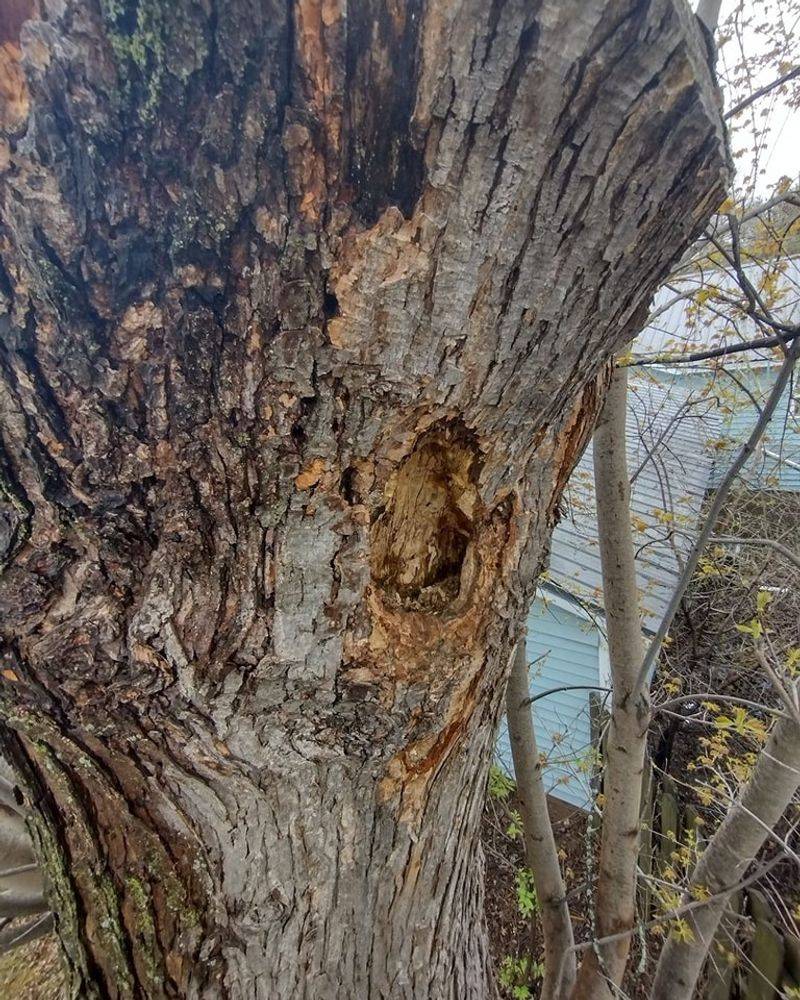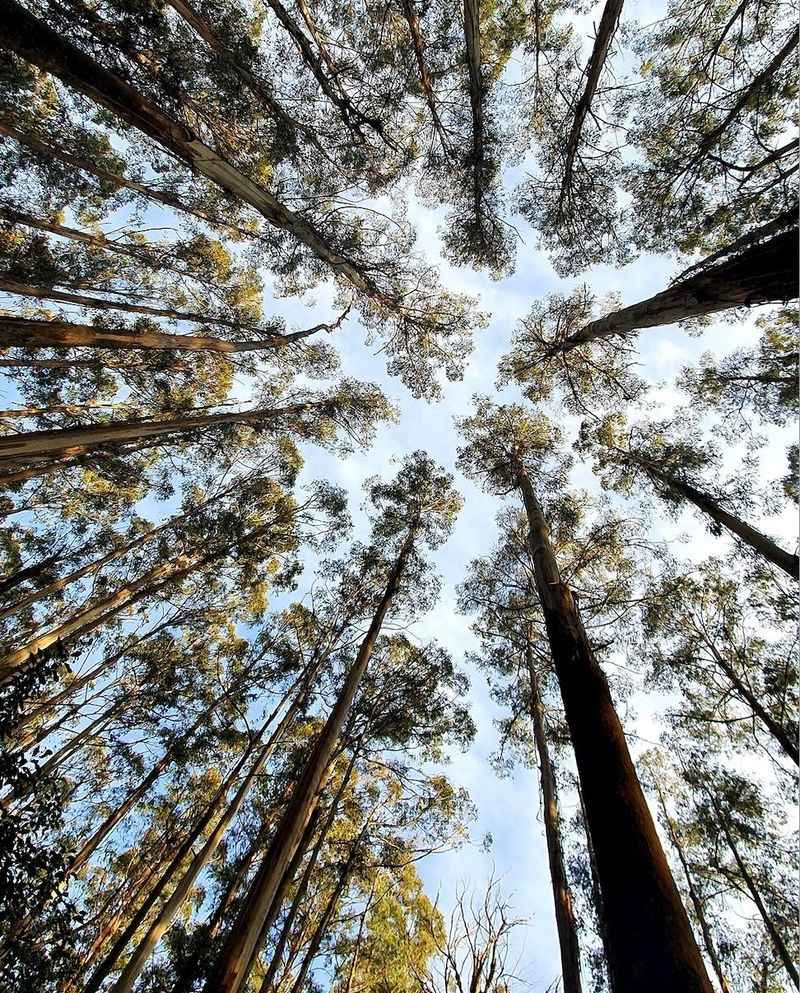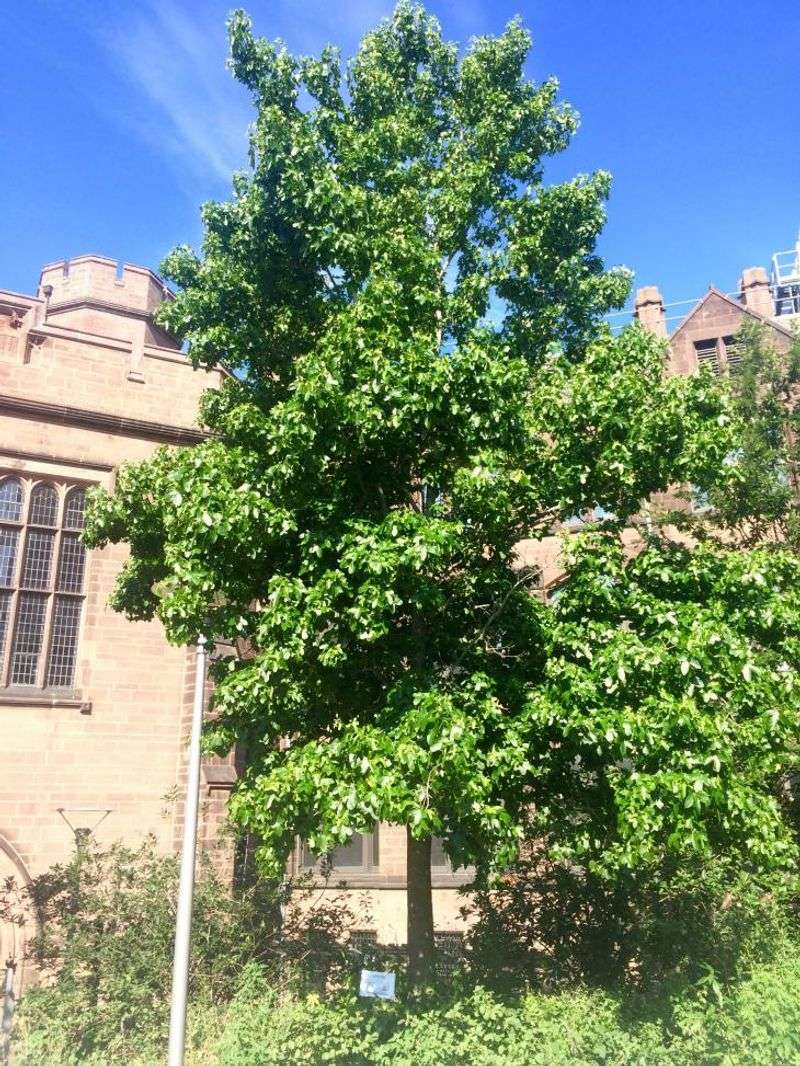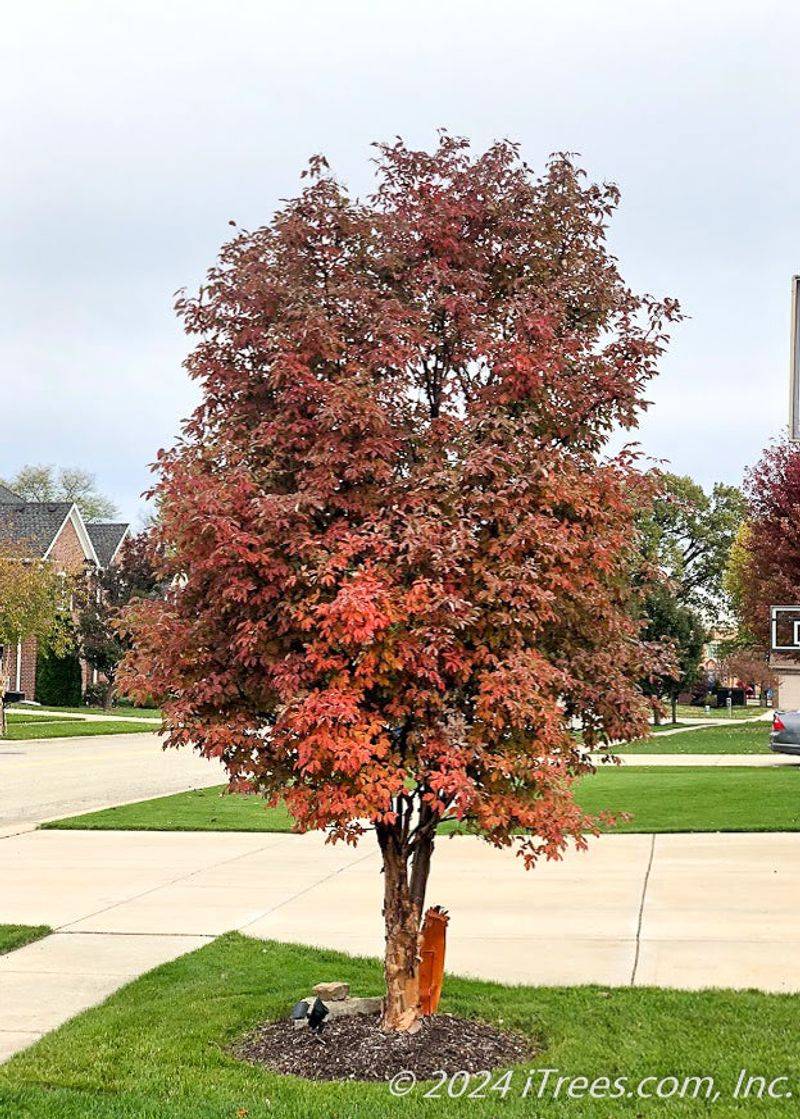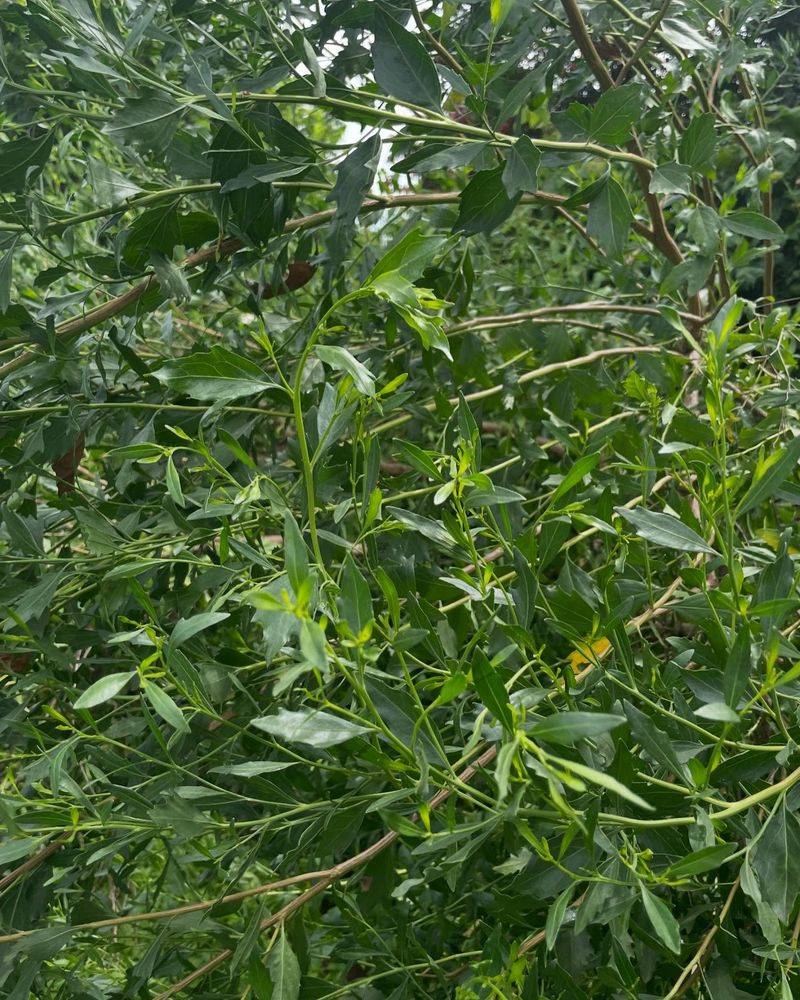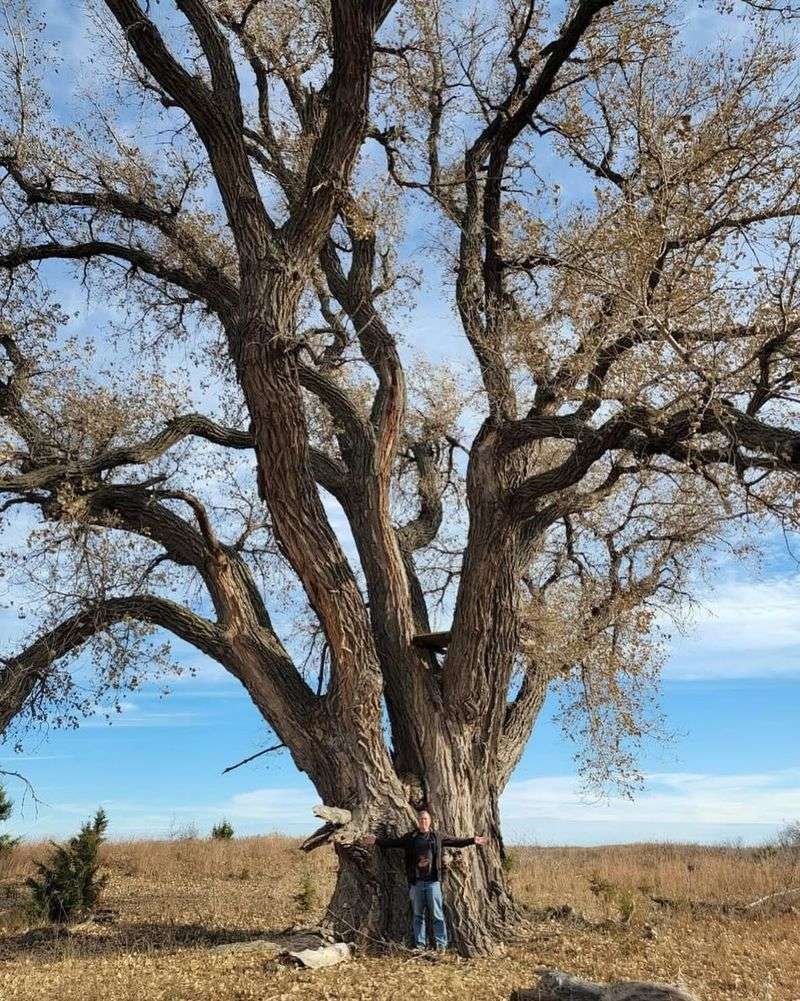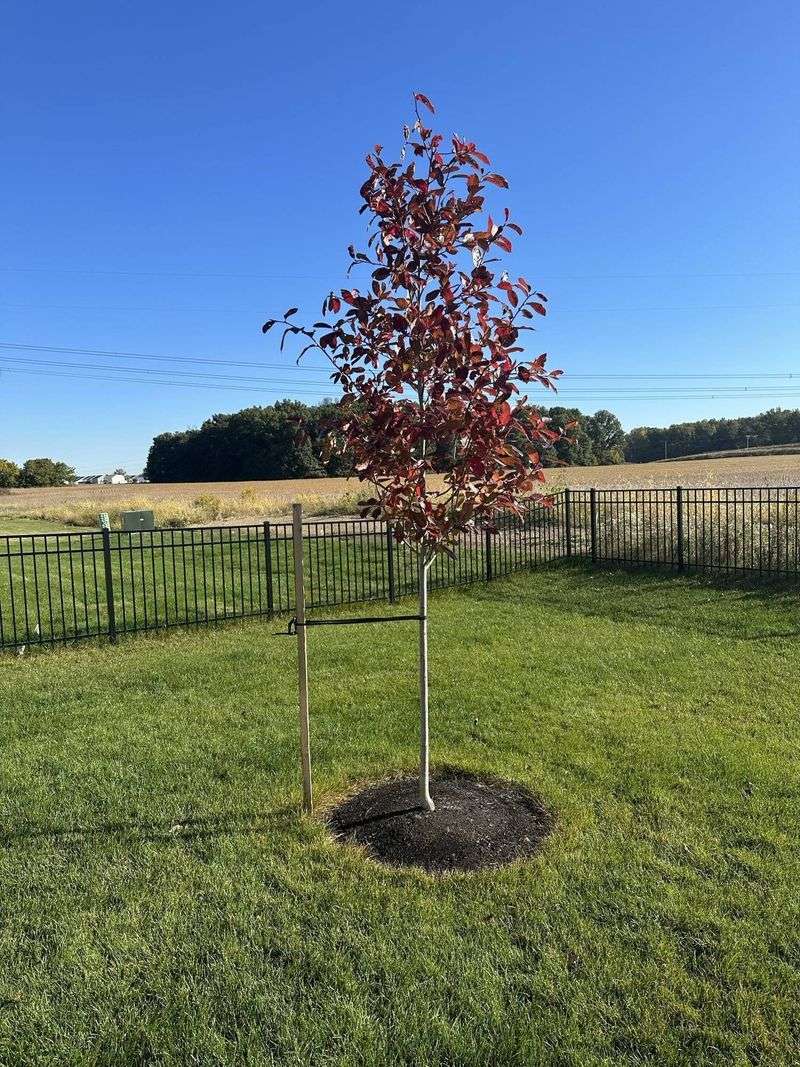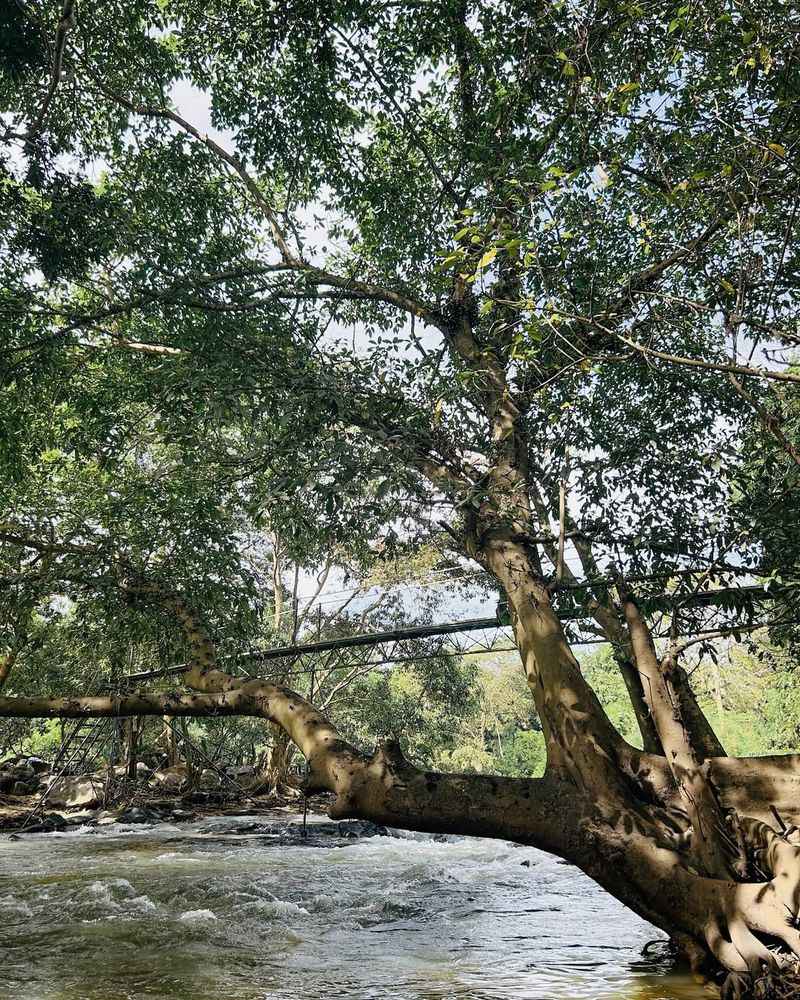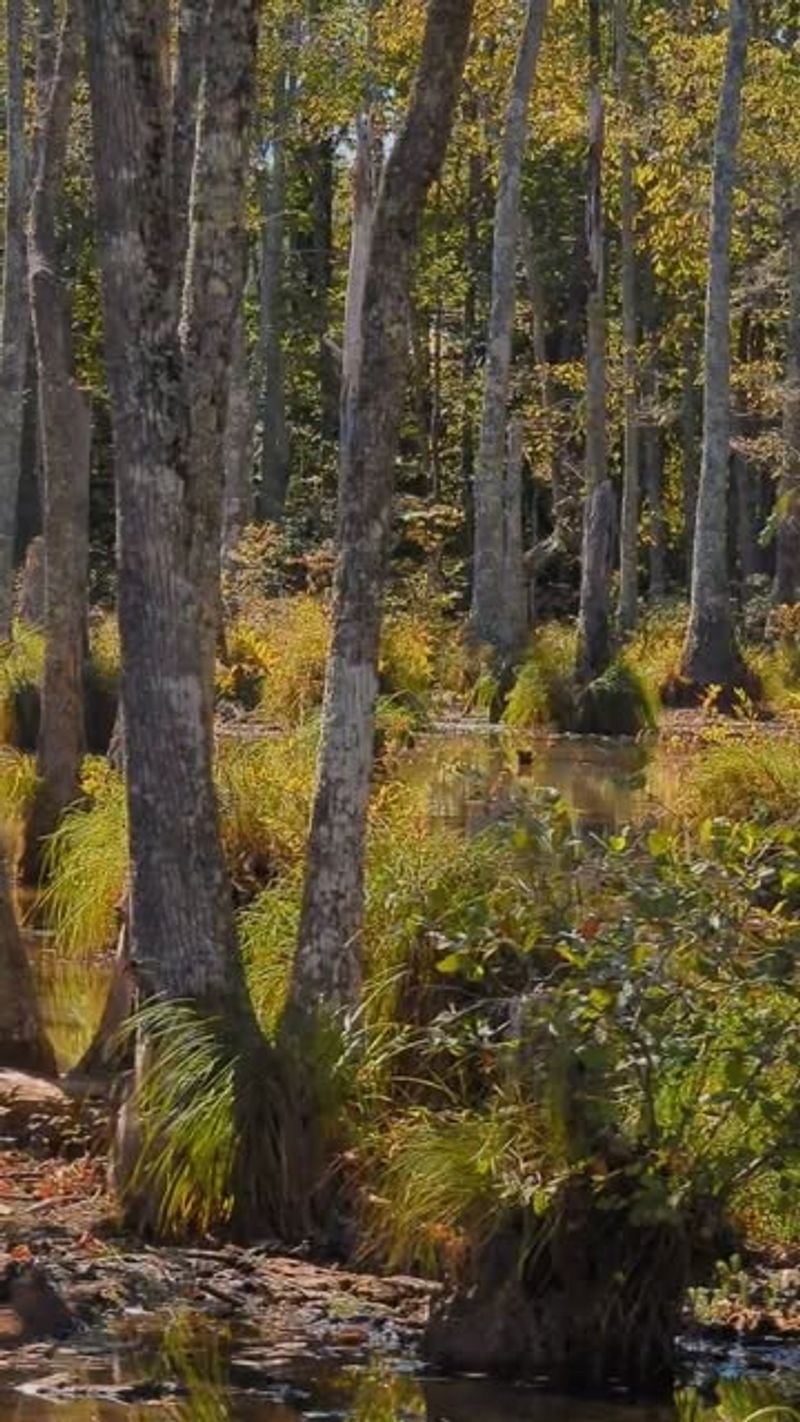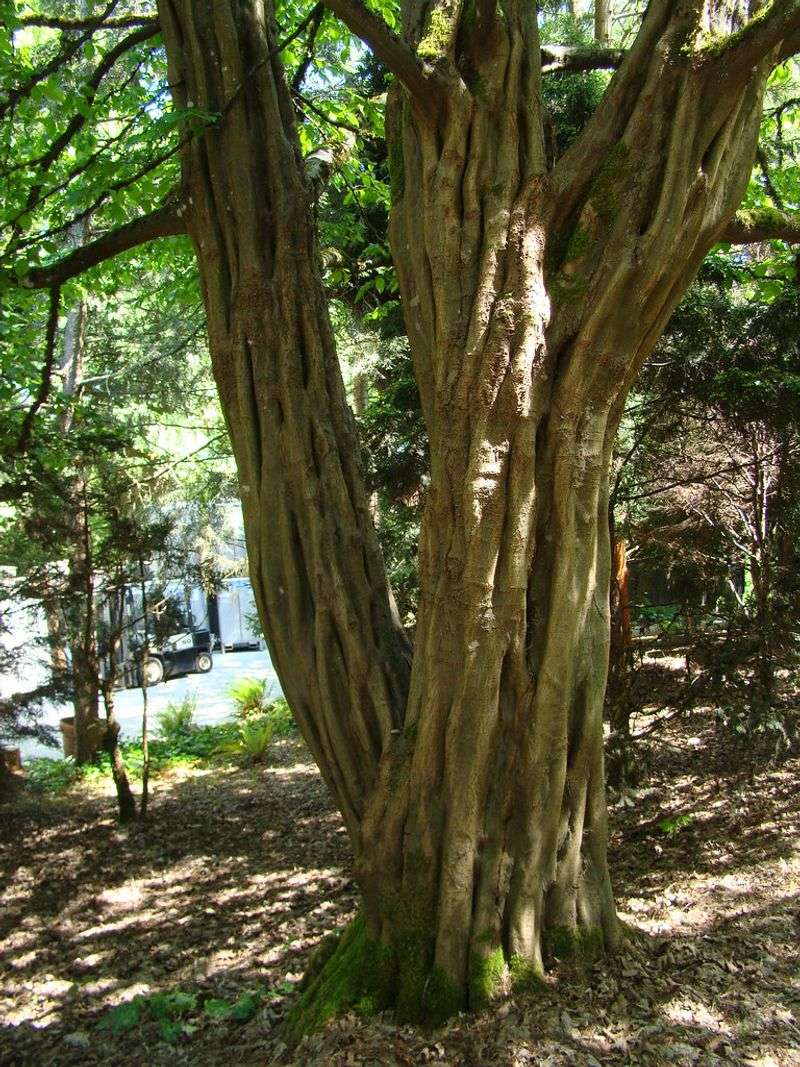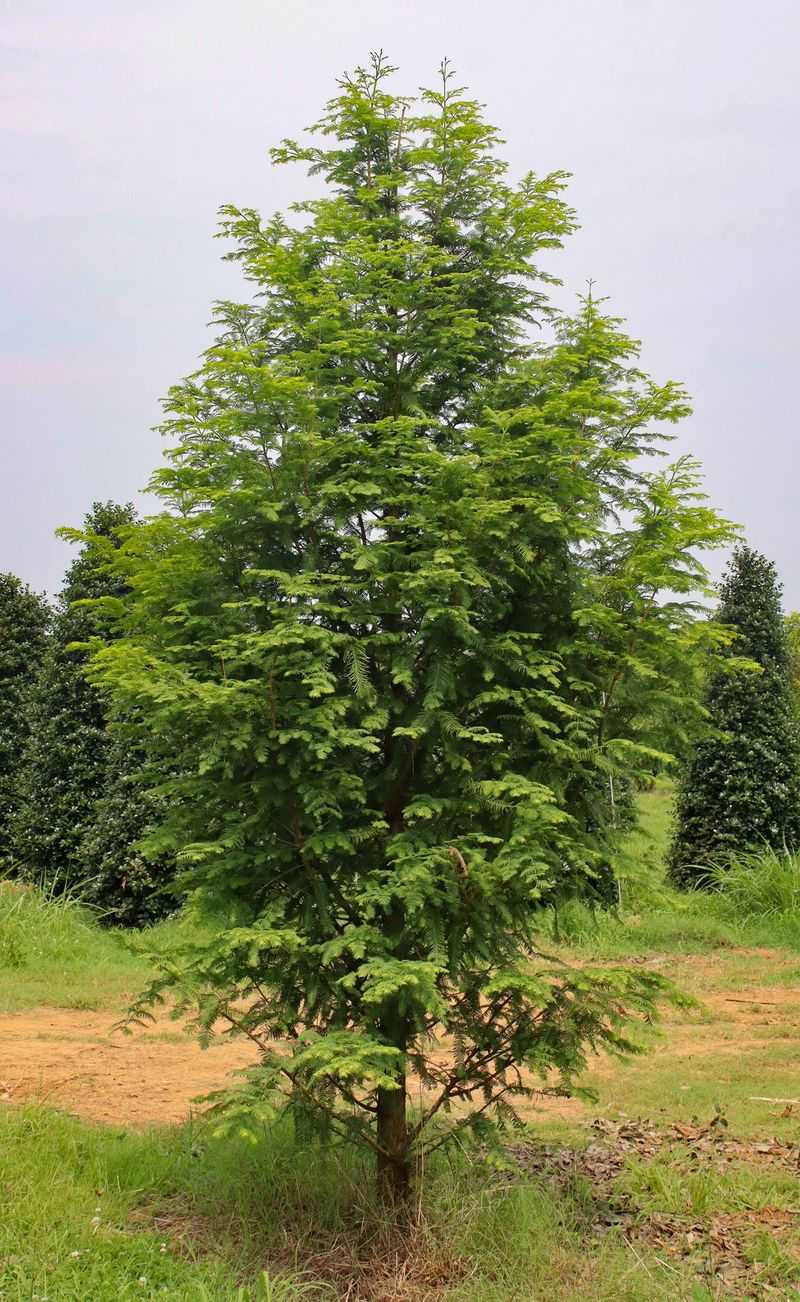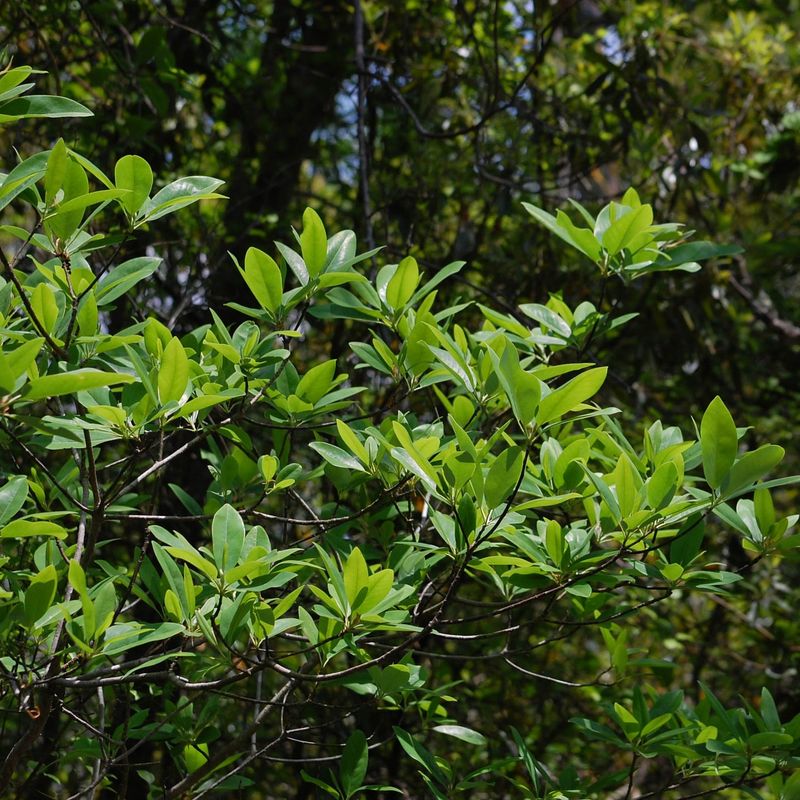Trees are nature’s giants that can transform any landscape. Some trees grow super fast, especially in places where the soil is soggy. Knowing which trees thrive in wet areas can help gardeners pick the right ones for their yards. Let’s explore some amazing trees that love damp soil and grow quickly.
1. Willow Tree
With graceful, wind-swept branches, this fast-growing tree brings elegance to wet landscapes. Thriving in damp soil, the willow tree quickly establishes itself along ponds, streams, and low-lying areas, where its wide-spreading roots help stabilize the ground.
The long, cascading leaves create a tranquil environment that invites birds and other wildlife, turning soggy spots into serene, shaded retreats.
2. Bald Cypress
Thriving in wet, swampy conditions, the bald cypress is a fast-growing tree that brings both beauty and resilience to soggy landscapes.
Its distinctive “knees” — root structures that rise above the water — help it adapt to consistently damp soil. This unique tree provides vital habitat for birds, insects, and other wildlife, making it a valuable part of any ecosystem.
In the fall, bald cypress trees transform with soft needles turning a stunning orange-brown, adding rich color to the scenery. As a deciduous conifer, it stands out as both hardy and visually striking.
3. River Birch
Perfectly suited for damp, soggy soil, the river birch is a fast-growing tree that adds charm and character to any landscape. Its distinctive bark peels in papery curls, offering visual interest even in winter.
Bright green leaves flutter in the breeze, creating a soft rustling sound and providing shade for nearby wildlife.
River birch thrives near water sources, growing quickly and supporting a healthy ecosystem. As the only birch native to the southern U.S., it’s both a practical and eye-catching choice for wet areas.
4. Red Maple
Bringing bold seasonal color and reliable growth, red maple adds both flair and function to moisture-rich landscapes.
Its roots take well to damp soil, allowing it to shoot up quickly and provide generous shade. In early spring, clusters of red flowers appear, followed by lush green leaves that blaze into fiery reds come fall.
Red maple also plays a role in supporting local ecosystems, attracting birds and pollinators throughout the year. With beauty in every season, it’s an ideal choice for areas that stay wet.
5. Silver Maple
Known for its shimmering foliage and rapid growth, silver maple brings a dynamic presence to areas with consistently damp soil. Its broad canopy offers cooling shade in summer, while its strong roots help stabilize soil near ponds and streams.
Birds and insects find shelter among its branches, making it a valuable addition to local ecosystems. With silvery-backed leaves that dance in the wind and a towering height that can exceed 80 feet, silver maple adds both beauty and resilience to water-loving landscapes.
6. Swamp White Oak
Adaptable and fast-growing, swamp white oak thrives in marshy, moisture-rich environments where many trees struggle.
Its wide-spreading branches and robust trunk create a generous canopy, perfect for shading wet areas. In autumn, the foliage shifts to a warm golden hue, adding seasonal color and charm. Swamp white oak plays a valuable role in supporting wildlife, offering both nourishment and habitat.
Closely related to the classic white oak, this hardy tree brings both function and beauty to soggy spots in the landscape.
7. Eucalyptus Tree
Fragrant and fast-growing, eucalyptus brings striking height and sensory appeal to moisture-rich landscapes.
Its tall, slender trunk and aromatic leaves not only add beauty but also attract birds and other wildlife. Eucalyptus trees thrive in damp conditions and are known for their peeling bark, which reveals colorful layers beneath—adding year-round visual interest.
The leaves produce a refreshing oil used in everything from remedies to perfumes. Originally native to Australia, eucalyptus has adapted to grow in gardens around the world, making it a bold and practical choice for wet soil.
8. Sweetgum Tree
Bursting with vibrant fall color and unique texture, sweetgum is a fast-growing tree that thrives in damp soil. Its star-shaped leaves turn fiery shades of red, orange, and purple in autumn, while its spiky seed balls offer visual interest throughout the year.
Sweetgum also plays a role in supporting local wildlife, providing shade and shelter in wet gardens and low-lying areas. With strong growth and ornamental value, this tree adds both function and flair.
9. Paperbark Maple
Elegant and compact, paperbark maple thrives in damp soil while adding standout beauty to smaller garden spaces. Its cinnamon-colored bark peels in delicate layers, creating visual appeal through every season.
In autumn, its foliage turns a brilliant red, delivering a bold splash of color. Paperbark maple also supports local ecosystems by providing shelter and food for birds and insects.
With its graceful form, vibrant hues, and year-round interest, this tree is a charming and practical choice for wet landscapes.
10. Black Willow
Slender and fast-growing, black willow thrives along lakeshores, stream banks, and other wet environments. Its narrow, graceful leaves rustle softly in the wind, adding a calming presence to soggy landscapes.
Black willow not only grows quickly in damp soil but also supports a wide range of wildlife with its shade and shelter. The dark, textured bark contrasts beautifully with its bright green foliage, adding visual depth.
11. Eastern Cottonwood
Towering over wet landscapes, eastern cottonwood is one of North America’s fastest-growing trees, making it perfect for large, moisture-rich spaces.
Its broad, heart-shaped leaves shimmer and rustle in the breeze, creating a calming, natural soundtrack. In spring, seeds drift through the air like cotton, adding a touch of magic to the surroundings. Eastern cottonwood offers generous shade and vital habitat for nesting birds and other wildlife.
With its rapid growth and striking presence, this tree brings both function and a bit of whimsy to soggy areas.
12. Black Gum
Glossy foliage and brilliant fall color make black gum a standout in damp, low-lying landscapes. Also known as tupelo, this tree grows steadily and adapts well to wet conditions, offering a long lifespan and strong, resilient wood.
Its furrowed bark adds texture and character year-round, while its vibrant red autumn leaves bring seasonal flair. Black gum supports a variety of wildlife, providing both food and shelter for birds and pollinators.
With its mix of beauty and durability, it’s a smart pick for moisture-rich gardens and naturalized areas.
13. Sycamore Tree
Bold and towering, the sycamore thrives in moist environments where its rapid growth and expansive canopy can truly shine. Its patchy, peeling bark reveals smooth white and gray layers beneath, creating a striking visual contrast.
Large leaves sway gently in the breeze, adding movement and shade to soggy landscapes. Sycamore trees play a vital ecological role by offering shelter and food to birds and other wildlife.
As one of the tallest native trees in North America, sycamore brings both grandeur and function to wet, open spaces.
14. Water Tupelo
Adapted to life in standing water, water tupelo flourishes in flooded swamps and soggy landscapes where few other trees can survive. Its swollen, buttressed trunk provides stability in waterlogged soil, while its glossy green leaves turn a cheerful yellow in fall.
Water tupelo grows quickly and supports wetland ecosystems by offering food and habitat to birds, insects, and other wildlife. It’s also a key source of nectar for bees, playing an important role in honey production.
With its resilience and ecological value, water tupelo is a standout choice for swampy settings.
15. American Hornbeam
Tolerant of moist, shaded conditions, American hornbeam—often called musclewood for its sinewy, sculpted trunk—adds both strength and elegance to damp garden spaces.
Though slower-growing than some others on the list, its dense canopy offers reliable coverage and year-round appeal. In autumn, its foliage shifts to a deep orange, bringing seasonal warmth to the landscape.
American hornbeam provides shelter and food for wildlife, making it an ecologically valuable choice. Its exceptionally hard wood is prized for tool handles, adding practical significance to its natural beauty.
16. Dawn Redwood
With delicate, feathery foliage and a slender silhouette, dawn redwood brings both elegance and speed to damp landscapes. This fast-growing conifer thrives in wet soil and adds a warm golden hue to the garden in fall.
Once believed extinct and rediscovered in China, dawn redwood is a true living fossil—offering a sense of history along with beauty. It provides habitat for birds and other wildlife, supporting biodiversity in wetter environments.
Its ancient origins, paired with rapid growth, make it a striking and meaningful choice for soggy spaces.
17. Sweetbay Magnolia
Delicate yet resilient, sweetbay magnolia flourishes in moist soil while bringing a graceful charm to smaller landscapes. Its creamy white flowers bloom in spring, releasing a light, citrusy fragrance that draws in pollinators and enhances biodiversity.
Shiny, evergreen-like leaves add year-round beauty, and the tree’s compact size makes it perfect for tight spaces in need of elegance.
Native to the southeastern United States, sweetbay magnolia offers both ornamental appeal and ecological benefits, making it a standout choice for wet gardens.


